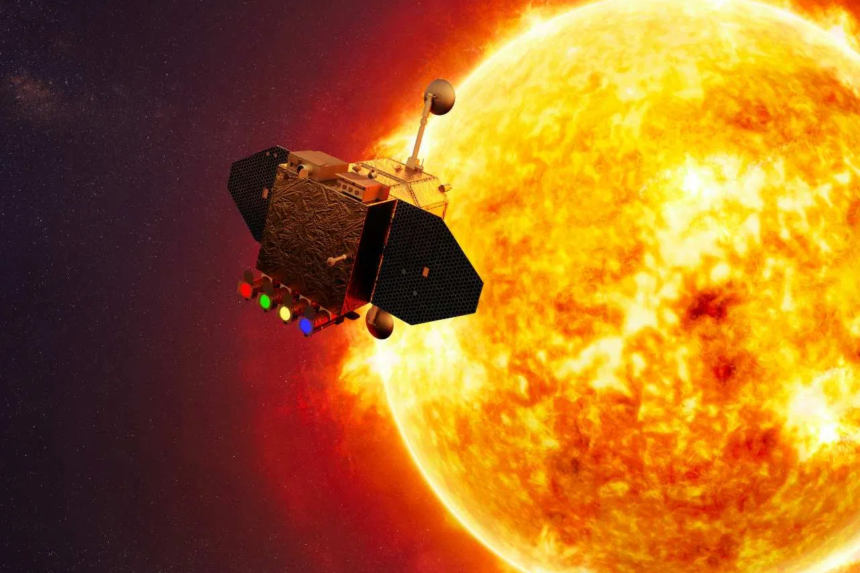After India’s solar mission, Aditya L1 embarked on a journey towards Lagrange point 1, following a crucial maneuver. Now, it’s studying energetic particles in the solar wind from space and will continue to do so for its entire lifespan, according to a senior astrophysicist.
The solar wind, a continuous stream of charged particles from the sun that permeates the solar system, will be the subject of investigation. Aditya L1 is equipped with a device known as the Supra Thermal & Energetic Particle Spectrometer (STEPS), which is part of the Aditya Solar Wind Particle Experiment (ASPEX) payload.
“STEPS is currently operational in space, but it wasn’t just sitting idle before that. It began functioning within Earth’s magnetic field on September 10 when Aditya was 52,000 kilometers above our planet,” explained Dr. Dibyendu Chakrabarty, a professor of Space and Atmospheric Sciences at the Physical Research Laboratory (PRL).
STEPS was developed by PRL with support from the Space Application Centre (SAC) in Ahmedabad.
“During the four-month journey until Aditya L1 reaches its destination, it will study energetic particles in the solar wind. This data will greatly contribute to maintaining the health and performance of our space assets,” added Dr. Chakrabarty.
STEPS consists of six sensors, each observing in different directions and measuring supra-thermal and energetic ions. The data collected during Earth’s orbits allows scientists to analyze the behavior of particles surrounding our planet, particularly in the presence of its magnetic field.
Aditya-L1, launched by the Indian Space Research Organisation (ISRO) on September 2, is headed for the First Lagrangian point, approximately 1.5 million kilometers from Earth. On September 18, ISRO announced, “Off to Sun-Earth L1 point! The Trans-Lagrangean Point 1 Insertion (TL1I) maneuver has been successfully executed. The spacecraft is now on a trajectory that will take it to the Sun-Earth L1 point.” Lagrangian points are positions where gravitational forces between two objects balance in a way that allows spacecraft to remain relatively stable for extended periods.
The L1 point is particularly significant for solar observations and was discovered by the mathematician Joseph Louis Lagrange. In the long term, the data collected by STEPS will also aid in understanding how space weather changes, according to the space scientist.






